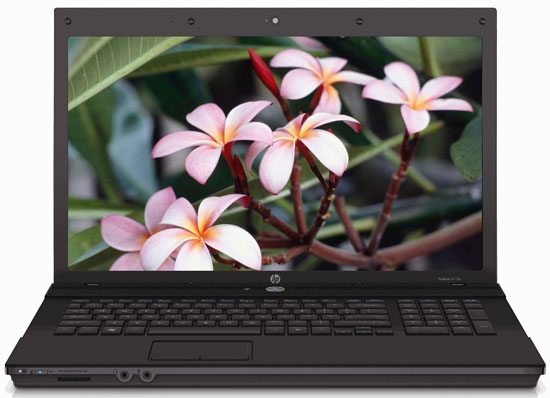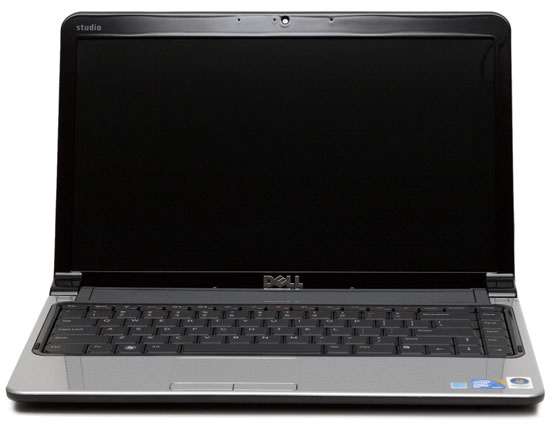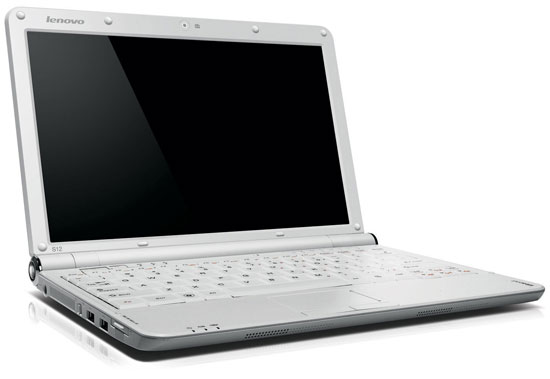Mobile Buyers' Guide, December 2009
by Jarred Walton on December 6, 2009 12:00 AM EST- Posted in
- Guides
AMD Laptops
Outside of sales - and there are many sales going on right now - laptops with AMD processors will mostly fall into this price bracket. The performance offered is good, though certainly there are faster laptops. One of the big selling points for AMD laptops is that they have good integrated graphics (ATI HD 3200) that can run many games, though usually only at low resolutions and detail settings. AMD-based laptops are really a question of priorities, and if you value performance and cost over battery life they are a very compelling option.
The latest AMD CPUs are now being built on a 45nm process and have architectures based off of K10 instead of the aging K8 design. All of these CPUs bear the Roman numeral "II" in their name, so look for the Turion II M500, Turion II Ultra M600, and Athlon II M300 CPUs. These CPUs should improve battery life and performance relative to older mobile Athlon/Turion designs, though it's unlikely they will be able to match Core 2 CPUs. Unfortunately, we're still trying to get a laptop for testing, so we can't provide a definitive answer at this time. We tried to find more information, but the best we could do is a note of "5 hours 15 minutes" with an HP dv7 at BestBuy - that's a 17.3" notebook with an 8-cell battery.
Ultimately, AMD-based laptops will typically cost around $100 less than Intel-based laptops with similar features, but they generally offer less battery life and performance. Given the features and performance available in the ASUS UL80Vt, we would recommend staying closer to the lower end of the price spectrum if you're looking at AMD laptops. The overclocked SU7300 CPU should offer close to the same performance as a ~2.0GHz AMD "II" CPU (i.e. the Athlon II M300/M320, slightly slower than the Turion II M500), and the G210M should offer about the same level of performance as the HD 3650/4570. You'd want a laptop with an HD 4650 or a GeForce G120M/G220M (9600M GT) and a Turion II Ultra (Pentium T4300) to surpass the UL80Vt performance, but there's still the topic of battery life.

The HP dv6z and dv7 are two of the few laptops that currently offer the latest AMD 45nm processors. With prices starting at $550 with the current $150 rebate - $630 with 4GB and a high capacity 6-cell battery - it's an interesting laptop but not our top recommendation. Depending on how much weight you place on battery life, graphics performance, and laptop size, you may disagree. In that case, have a look at the HP Pavilion dv6z (we're not sold on 17" laptops, so we'll pass on the dv7).
Intel Laptops
On the CPU side, Intel has had a clear lead over AMD since the launch of Core 2 several years back. In fact, on mobile solutions it would be difficult to suggest that AMD has ever enjoyed a lead over Intel. Ever since Banias in 2002, Pentium M and Centrino delivered what was arguably a better mobile solution for most users than anything AMD offered; Athlon 64 laptops in the Pentium 4 era were mostly of interest to the high performance crowd.
The CULV processors are great for battery life, but even the ASUS UL80Vt with its overclocked CPU doesn't offer nearly the performance available in other Core 2 mobile offerings. The Pentium T4300 (2.10GHz, 1MB cache) is very inexpensive and it should match most mobile AMD CPUs. Laptops start at around $500, but the GMA 4500MHD IGP is clearly inferior to ATI's HD 3200/4200. The P8400 and P8600 take clock speeds up to 2.26GHz and 2.40GHz, though you'll be hard-pressed to keep costs under $850 with such CPUs. If you want better gaming performance, look for a lower end Core 2 CPU with a discrete GPU or a better IGP like NVIDIA's 9400M.

Our favorite pick right now for Intel Core 2 laptops in this price bracket is the Dell Studio 14z. Maximum battery life is around six hours with the 8-cell battery, and the combination of Core 2 with the 9400M results in a good blend of performance. In gaming tests, the GeForce 9400M is around 50% faster than the ATI HD 3200, making it the current king of IGP solutions as far as performance is concerned. The base model Studio 14z comes with a Core 2 T6600 (2.2GHz, 2MB, 800FSB), 3GB DDR3, 250GB HDD, 1366x768 LCD, 56Wh battery, and Win7 Home Premium. $800 will get you the larger battery, and $850 will allow you to upgrade to the 1440x900 LCD - both upgrades are highly recommended.
Atom Laptops?
While there are plenty of Atom-based offerings in this price range, we feel Atom is a much better fit at the lower end of the price spectrum, and we would recommend against spending more than $400 (perhaps $450) for such a laptop. Regular Core 2 laptops are more than three times as fast (even for the low end CPUs), and CULV laptops are still twice as fast while offering similar battery life. Atom is really about keeping costs as low as possible at the expense of performance, and we can't recommend such laptops in the high price segments. As mentioned already, we also place the VIA Nano laptop (Samsung NC20) in this same category; priced at over $500, there are just too many other compelling options.

If you want a viable Atom netbook for around $500, we'd recommend the Lenovo S12 with 2GB. It's around $520, but we didn't like the HP Mini touchpad or keyboard enough that we'd spend the extra on the IdeaPad S12. About the only thing it can do without difficulty that CULV systems struggle with is 1080p Flash video, but that's at least something.










49 Comments
View All Comments
JarredWalton - Monday, December 7, 2009 - link
I've placed an order... I'll do a review if they work well.yacoub - Sunday, December 6, 2009 - link
http://i.i.com.com/cnwk.1d/i/bto/20091118/by-manf....">http://i.i.com.com/cnwk.1d/i/bto/20091118/by-manf....I can't find the initial article anymore but this just came out a couple weeks ago.
http://news.cnet.com/8301-17938_105-10400447-1.htm...">http://news.cnet.com/8301-17938_105-10400447-1.htm...
HP had the most quality issues, Asus the least.
Blahman - Sunday, December 6, 2009 - link
If you thought the UL80Vt was good, check out its newer slimmer brother: the UL30Vt. It shares all the same specs, but better build quality and all packed into a thinner, lighter chassis.It's available from Amazon for $800. The reviews so far are very positive.
http://www.amazon.com/UL30Vt-X1-13-3-Inch-Laptop-W...">http://www.amazon.com/UL30Vt-X1-13-3-In...ctronics...
trickdaddy111m - Tuesday, December 8, 2009 - link
The UL30Vt does look very nice, but it lacks discrete graphics and the Turbo function of the UL80Vt. So, "same specs" is not accurate.KikassAssassin - Wednesday, December 9, 2009 - link
The UL30Vt has turbo and the discrete graphics. The specs are exactly the same as the UL80Vt except it has a 1" smaller screen, no optical drive, and a slightly smaller battery.You're probably looking at the UL30A.
KikassAssassin - Sunday, December 6, 2009 - link
The UL30Vt looks like a really nice alternative if you want something lighter than the UL80Vt and you don't need an optical drive. Unfortunately, the UL30Vt on Amazon is the X1 model that only has a 4400 mAh battery, compared to the UL80Vt-A1's 5600 mAh battery, so it'll only have about 80% of the battery life. The battery life should still be excellent, just not quite as amazing as the UL80Vt'stechwriters4breakfast - Sunday, December 6, 2009 - link
atom 2arrandale
bsoft16384 - Sunday, December 6, 2009 - link
I just want to give another shout out for the Acer 1410. This is an absolutely fantastic notebook for $400.I have the single-core version (Core 2 Solo SU3500, 1.4GHz, 3M cache) so it's somewhat faster on single-threaded code but slower on multi-threaded code than the Celeron SU2300 (1.2GHz, 1M cache). That said, I have no performance complaints about the laptop.
GPU performance is, as you would expect, pretty bad. But it's still dramatically ahead of a GMA950-based netbook (around 5X by my estimations), which makes it fine for playing older titles like Warcraft III, CS 1.6, UT classic or 2004, Quake 3 / OpenArena, Half-Life.
Even WoW runs "OK" on the Acer 1410, as long as you're willing to deal with ~20-30 FPS and a slideshow in Dalaran. But you *can* run it, and it's fine for doing dailies or checking the AH. I have my desktop if I want to play for real.
The keyboard is excellent, except for the page up/down buttons (which are annoyingly above the arrow keys) and home/end (combined with page up / down). Other than those annoyances, the keyboard is full-sized and has the layout that you would expect.
The screen is decently bright; contrast is "OK" but not great, and the viewing angle is lame (but so are most laptops). It's easily better than my ThinkPad T61.
There are some surprises port-wise: the 1410 has HDMI (with 8-channel LPCM audio) and the audio-out port does SPDIF/TOSLINK (with a 3.5mm to TOSLINK adapter), neither of which are common on a $400 laptop.
The WiFi is Intel 5100 802.11n, which is also nice. Ethernet is Atheros, audio is Realtek.
As you would expect with an ULV notebook, the 1410 doesn't really ever get hot, even at 100% CPU / GPU. It's not particularly noisy either, unless you have a defective fan (as my first one from Amazon did).
The 1410 takes forever to charge from empty (2.5 hours if off, 3-4 if on). That's because it uses the same 30W power supply as the Aspire One. On the other hand, the power adapter is very small and decently cheap, both of which are pluses.
Battery life is 5-6 hours, depending on how hard you push the machine. At idle, at minimum brightness, Windows reports over 12 hours, but you can't achieve this in practice. With light web browsing and Flashblock, expect 6+ hours.
The touchpad is Synaptics, and does multi-touch.
This system is the smallest, lightest system that I would consider a 'notebook' rather than a 'netbook'. I considered the HP Mini 311, but it maxes out at 3GB and doesn't support x86-64 or virtualization, plus the Core 2 Solo beats the pants off of the Atom. NVIDIA ION isn't really a whole lot better than the GMA X4500MHD, because the Atom CPU prevents you from playing any modern games anyway and the GMA X4500 does fine for Windows Aero and HD video acceleration.
Two years ago the Aspire 1410 would have cost $2000 and would be called an 'ultralight'. Today it's $400.
Keeir - Wednesday, December 9, 2009 - link
Don't forget its slightly more expensive brotherTimeline 1810T-8
Core 2 Duo (SU7300), 4 Gigs of Ram, Bluetooth, Larger HD, same wieght and battery
Picked mine up for <600 from Amazon (though I see they have ballons to close to 700)
notanakin - Monday, December 7, 2009 - link
Unfortunately this guide came out just a few days too late, but fortunately I'd settled on the Acer 1410 (SU2300) and it's a nice little machine. Certainly fast enough for simple tasks and for my old eyes the screen size is better than the 10.1 inchers.Here's a very useful link to a table of laptops/CPUs/Screen size prepared for the recent PC Show in Singapore where I bought the laptop. Great for doing some quick comparisons.
(Prices are in Singapore $ - about US$1=S$1.4, so the prices are a bit more expensive than in the USA, but they give some discounts off the published price and throw in stuff - I got an external DVD-writer plus a few smaller things with the Acer.)
But how I HATE the glossy screen. Are they cheaper than matte screens or what? I'd gladly pay US$50 more for a matte screen.